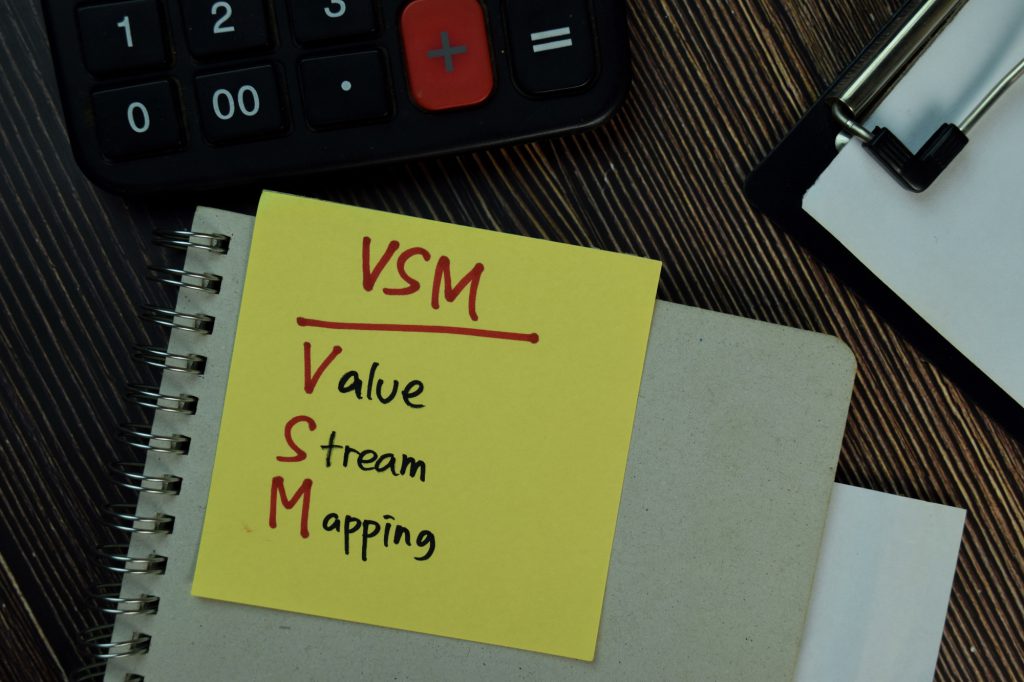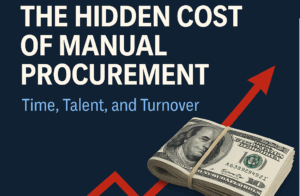Follow this easy, step-by-step guide to conduct a successful value stream mapping exercise!
Value Stream Mapping (VSM) is a powerful Lean tool used to visualize, analyze, and improve the flow of materials and information within a process or value stream. By identifying waste and inefficiencies, VSM helps organizations streamline operations and enhance overall performance. Follow this step-by-step guide to conduct a successful value stream mapping exercise:
Step 1: Define the Scope and Purpose
- Clearly define the scope of the value stream map. Identify the process or value stream to be mapped and the specific objectives you want to achieve through the exercise.
- Determine whether the focus will be on a specific department, a single process, or the entire end-to-end value stream.
Step 2: Create a Cross-Functional Team
- Assemble a cross-functional team that includes representatives from all key areas involved in the value stream. This team should include process owners, operators, subject matter experts, and stakeholders.
- Ensure that the team members have a good understanding of the process and are committed to actively participating in the VSM exercise.
Step 3: Map the Current State
- Begin by mapping the current state of the value stream. This involves documenting the entire process step-by-step, from the initial customer demand to the delivery of the final product or service.
- Use symbols and icons to represent process steps, inventory levels, information flow, and cycle times. Standardize the symbols to ensure clarity and consistency.
Step 4: Analyze the Current State
- Analyze the current state map to identify areas of waste, bottlenecks, and inefficiencies. Look for delays, overproduction, excessive inventory, rework, and waiting times.
- Calculate key performance metrics like cycle time, lead time, and process efficiency to quantify the performance of the current state.
Step 5: Identify Improvement Opportunities
- Engage the cross-functional team in a brainstorming session to identify improvement opportunities. Discuss potential solutions to address the identified waste and inefficiencies.
- Prioritize improvement opportunities based on their potential impact and feasibility.
Step 6: Map the Future State
- Based on the improvement opportunities, design a future state value stream map that represents the ideal state of the process. Remove waste, simplify processes, and optimize information flow.
- Use different colors or symbols to distinguish between the current state and the future state.
Step 7: Develop an Action Plan
- Create a detailed action plan that outlines the specific steps required to transition from the current state to the future state. Assign responsibilities, set timelines, and define key performance indicators (KPIs) to measure progress.
- Ensure that the action plan is realistic and achievable, and that it aligns with the organization’s strategic goals.
Step 8: Implement and Monitor Progress
- Begin implementing the action plan in a phased and controlled manner. Monitor progress regularly and make adjustments as needed.
- Use visual management tools, such as kanban boards, to track the status of improvement initiatives and communicate progress to the entire organization.
Step 9: Continuous Improvement
- Value stream mapping is not a one-time exercise; it is a continuous improvement tool. Regularly review and update the value stream map as the process evolves or new improvement opportunities arise.
- Foster a culture of continuous improvement within the organization to sustain the gains achieved through value stream mapping.
Conducting a successful value stream map requires careful planning, cross-functional collaboration, and a commitment to continuous improvement. By following this step-by-step guide, you can visualize your current state, identify waste and inefficiencies, and design a future state that optimizes the flow of materials and information. Value stream mapping empowers organizations to make data-driven decisions, streamline operations, and enhance overall performance, positioning them for success in a competitive and dynamic business environment.
The Perfect Planner Team is here if you have any questions about Value Stream Mapping, and we offer a free consultation service. If you would like to connect with us on this article or any other topic, please message us on LinkedIn, shoot us an email at info@perfectplanner.io, visit our website at www.perfectplanner.io, or give us a call at 423.458.2979.
Author: Thomas Beil
Publication Date: August 31, 2023
© Copyright 2023 Perfect Planner LLC. All rights reserved.






